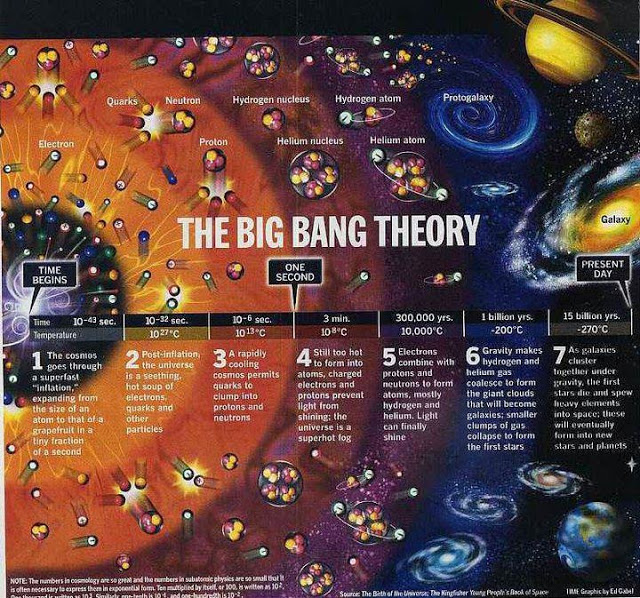A new theory claims that the universe may not have started with a bang. According to this new study, the universe was not ever a singularity or an infinitely minor and infinitely dense point of matter at all. Goosebumps, Right!
In actual fact, the universe may have no start at all. Study co-author Saurya Das, a theoretical physicist at the University of Lethbridge, Canada, said "Our theory suggests that the age of the universe could be infinite,"
This new notion could also clarify what dark matter is actually made of, Das added. According to the Big Bang theory, the universe was born nearly 13.8 billion years ago. All the matter that occurs today was once squeezed into an infinitely dense, infinitely small, ultra-hot dot called a singularity. This little fireball then blasted and growth to the early universe started.
This singularity comes from the math of Einstein's theory of general relativity, which defines how mass warps space-time, and from an additional equation (called Raychaudhuri's equation) that foretells whether the route of something will merge or diverge with time. Going backward in time, as claimed by these equations, all matter in the cosmos was once in a tiny single point — which is also known as the Big Bang singularity.
But that's not quite accurate. In Einstein's formulation, the laws of physics essentially break before the singularity is touched. But researchers generalize backward as if the physics equations still hold, states Robert Brandenberger, a theoretical cosmologist at McGill University, who was not the part of this study.
Brandenberger also told Live Science, "So when we say that the universe begins with a big bang, we really have no right to say that," There are other difficulties developing in physics — specifically, that the two most leading theories, quantum mechanics and general relativity, can't be merged to come up with single concept. Quantum mechanics states that the actions of tiny subatomic particles are basically uncertain. This against the Einstein's general relativity, which is deterministic, implying that once all the regular laws are identified, the future is entirely preset by the past, Das said.
And neither theory clarifies what dark matter, an unseen form of matter that applies a gravitational pull on regular matter but cannot be identified by most telescopes, is actually made of.Quantum modification:
Das and his coworkers wanted a way to solve at least some of these problems. To do so, they considered an older method of picturing quantum mechanics, called Bohmian mechanics. In Bohmian mechanics, an unseen variable rules the strange actions of subatomic particles. Unlike other formulations of quantum mechanics, it offers a way to compute the path of a particle. By utilizing this old-fashioned method of quantum theory, the scientists calculated a small rectification term that may well be comprised in Einstein's theory of general relativity. Then, they figured out what would occur in deep time. So what’s the outcome? In this new formulation, there is no singularity at all, and the universe as we know it is infinitely old.
How to test this theory?
Das said that one way of understanding the quantum correction term in their equation is that it is connected to the density of dark matter, if so, the cosmos could be packed with a superfluid made of theoretical particles, for instance the gravity-carrying particles known as gravitons, or ultra-cold, ghostly particles known as axions. Das also said that One method to test the theory is to look at how dark matter is dispersed in the cosmos and comprehend if it matches the properties of the suggested superfluid
Nevertheless, the new equations are just one way to settle quantum mechanics and general relativity. For example, a portion of string theory acknowledged as string gas cosmology forecasts that the universe once had a long-lasting static period, while other theories forecast there was once a cosmic "recoil," where the universe first contracted till it touched a very small size, then initiated expanding, Brandenberg said.
This new theory was described in a paper published in the journal Physical Letters B, and in an additional paper that is presently under peer review, which was issued in the preprint journal arXiv.
